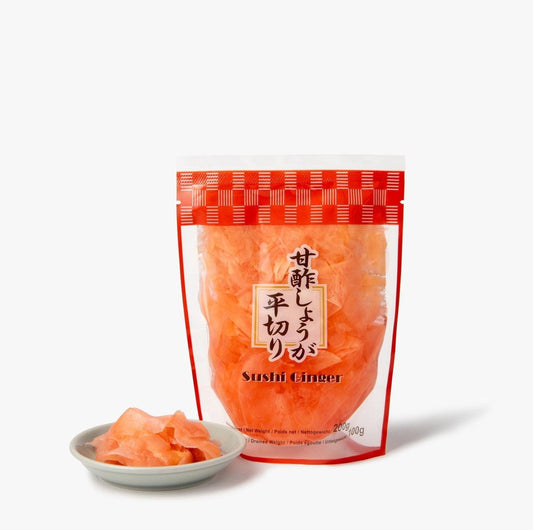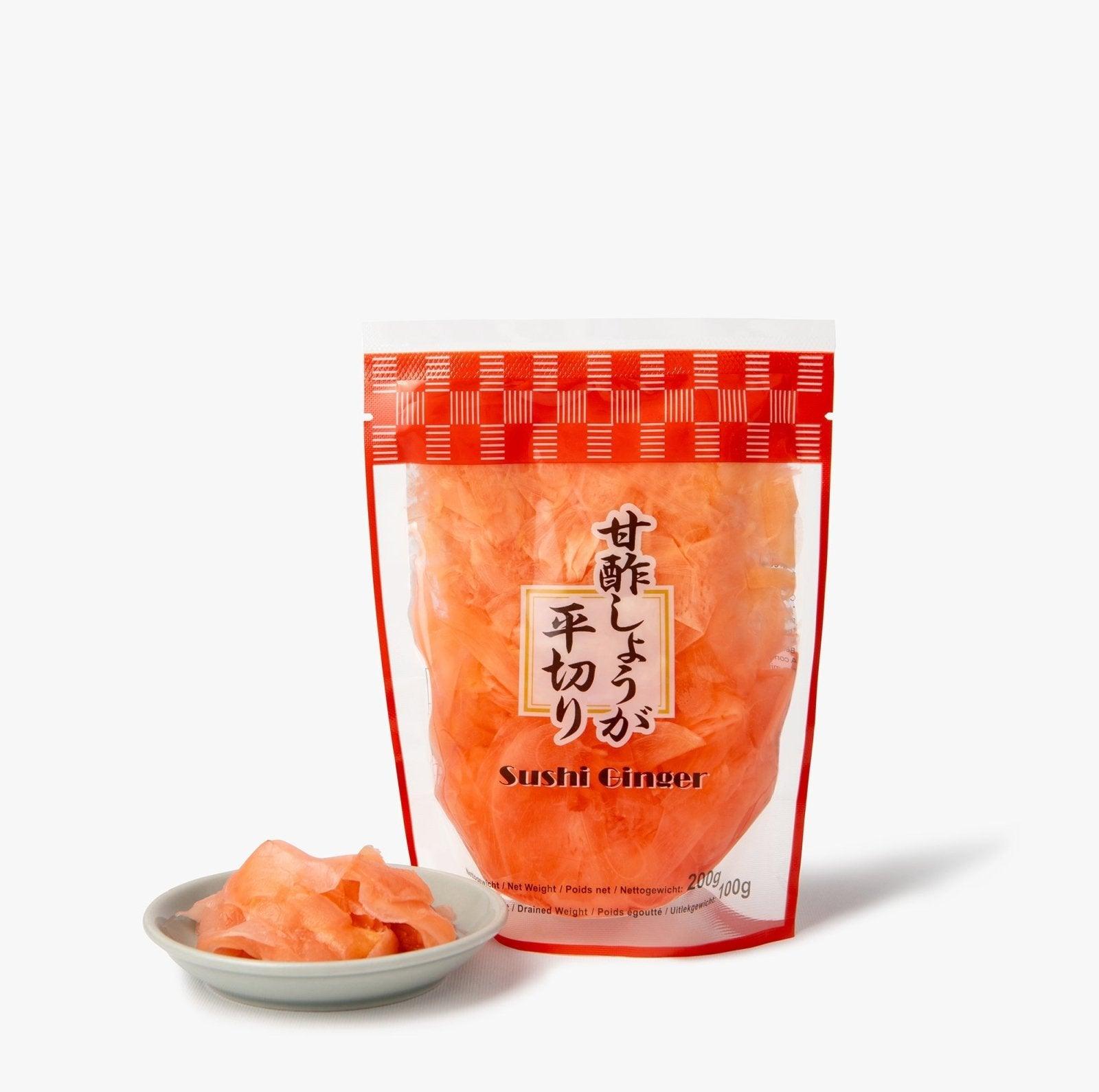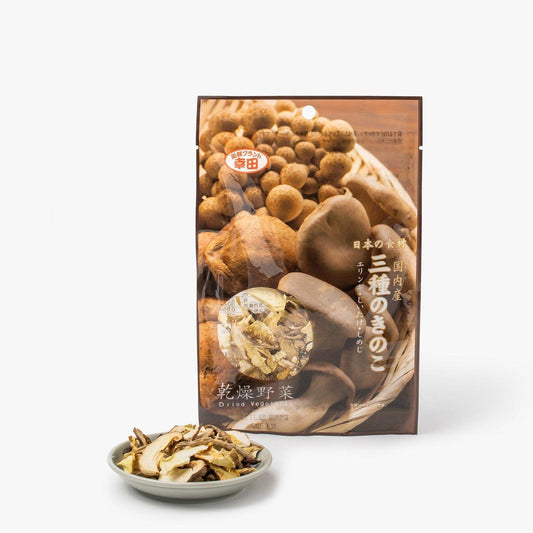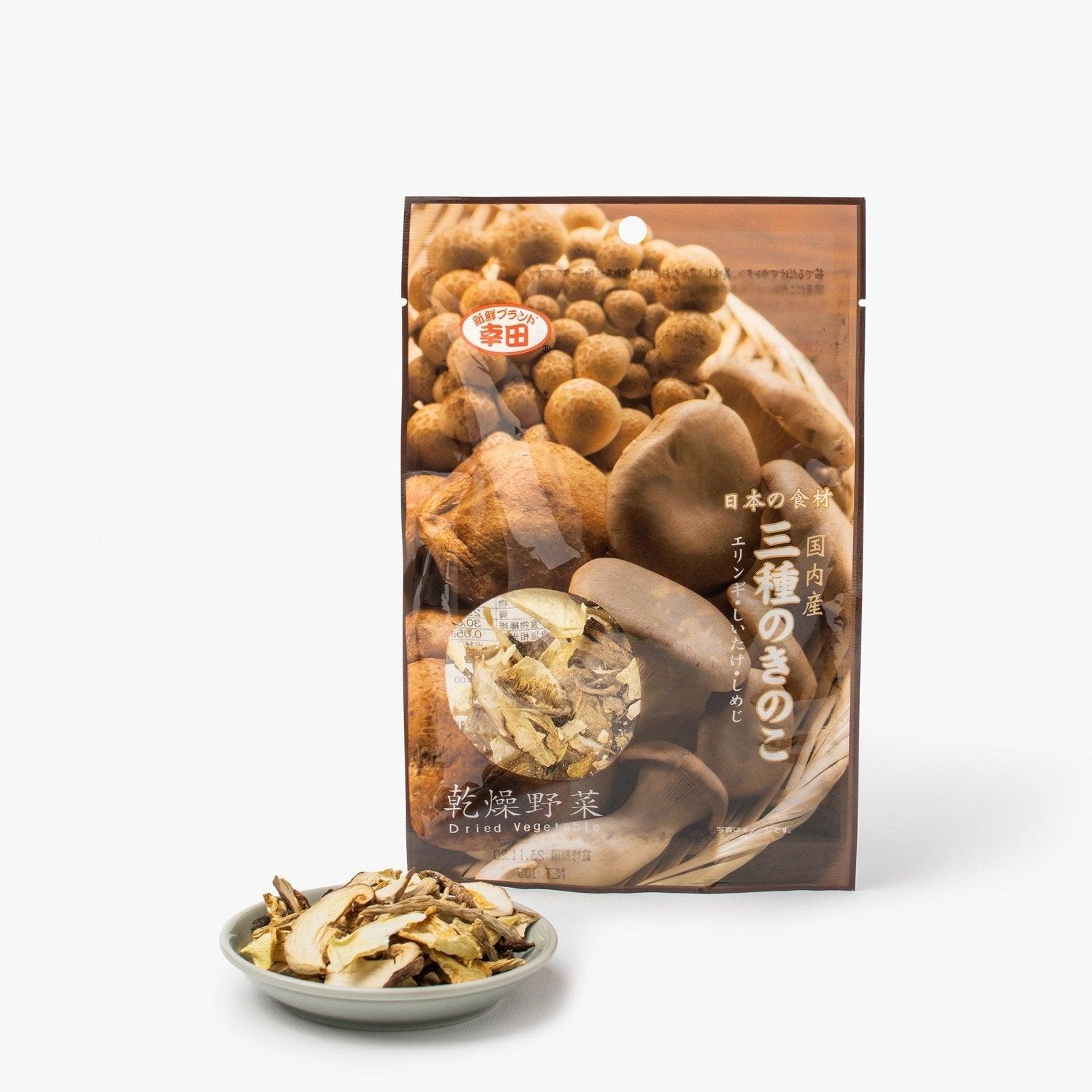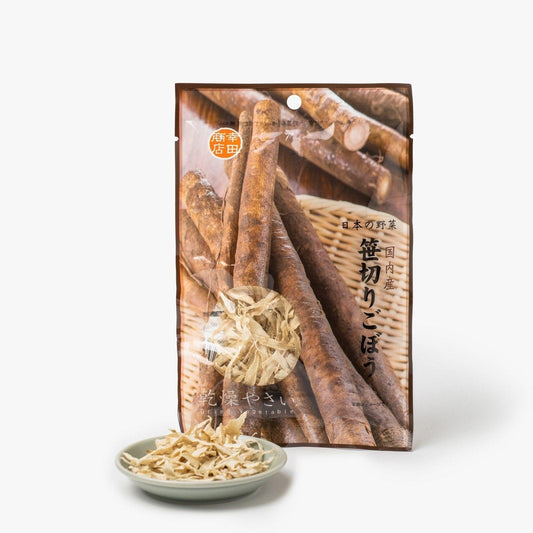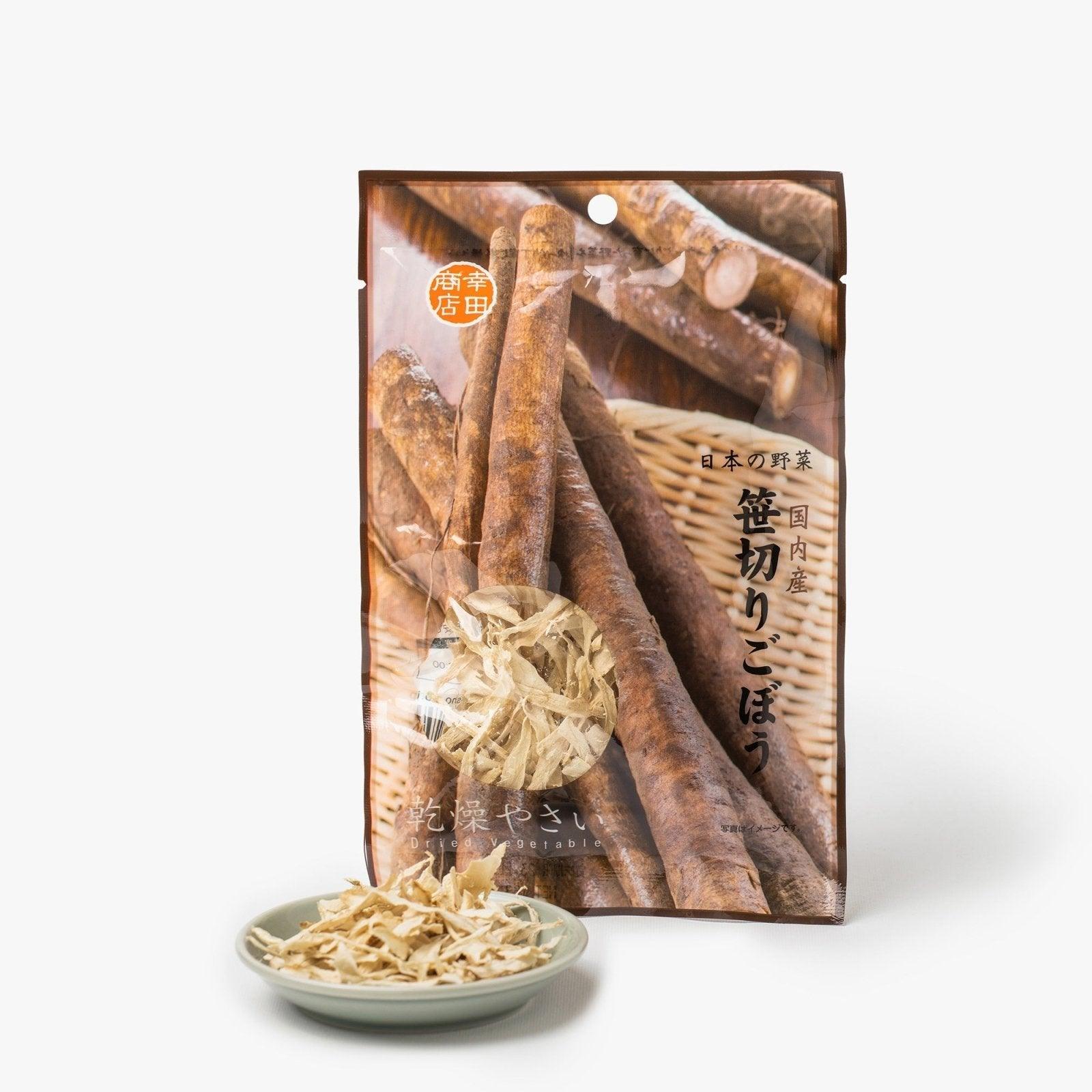Find out more about vegetables, beans and Japanese konjac
What's the difference between dried and freeze-dried vegetables?
Dried and freeze-dried vegetables are two preservation methods that offer different flavors and a variety of uses in Japanese cuisine.
- Dried vegetables: This traditional process consists of slowly dehydrating vegetables (such as daikon radish, shiitake or ginger) to preserve their taste and nutrients. They need to be rehydrated before use, especially in Japanese soups, tsukemono or simmered dishes.
- Freeze-dried vegetables: This more modern method freezes vegetables before removing the water under vacuum, thus preserving a lighter, airier texture. They rehydrate very quickly and are often used in instant soups or express dishes.
On the price side, freeze-dried vegetables are often more expensive due to the manufacturing process.
Why do the Japanese use so many dried vegetables in their cooking?
The Japanese use dried vegetables extensively in their cooking for practical, nutritional and cultural reasons.
From a practical point of view, drying allows vegetables to be stored for long periods without refrigeration. This is particularly useful for shiitake, daikon radish or seaweed such as kombu, which add depth of flavor to soups, tsukemono and simmered dishes.
In terms of taste, drying intensifies flavors. For example, dried shiitake mushrooms have a more pronounced taste than fresh ones, and are a must in udon noodles, miso soups and rice dishes.
This tradition is also part of our quest for a balanced diet. Azuki beans, konjac and pulses are high in fiber, low in calories and perfectly suited to a healthy diet.
Finally, the use of dried vegetables is a culinary heritage. Since the Edo period, drying has been a means of storing food for winter or long journeys. Even today, products such as umeboshi (dried plum) and dried tofu remain very popular.
What's the difference between edamame beans and conventional soybeans?
- Edamame beans are soybeans harvested young and unripe. They are still green and have a tender texture and sweeter taste than ripe soybeans. Edamame are commonly served as a snack or aperitif in Japan, often simply boiled with a little salt or in Japanese soups.
- In contrast, conventional soybeans are left to mature before being harvested. Once ripe, they become harder and drier, and are used in a multitude of products such as tofu, tempeh, soy noodles and soy sauces. Soybeans are also available in dried form, as in dried vegetable dishes or soups.
Thus, the main difference lies in their texture, taste and culinary use. Edamame beans are softer and sweeter, while conventional soybeans are firmer and often used to make more processed soy products.
How to cook and season edamame?
Cooking edamame :
- Start by rinsing the edamame beans under cold water to remove any impurities.
- Heat a large pot of salted water. Add 1 to 2 tablespoons of salt per liter of water to enhance the flavor of the beans.
- Once the water is boiling, plunge the edamame into it and cook for 5 to 6 minutes if you like them slightly crunchy, or a little longer if you prefer a more tender texture.
- Drain the edamame and leave to cool for a few minutes before serving.
Seasoning :
- The simplest and most popular way to season edamame is to add salt immediately after cooking. You can also opt for sea salt or sesame salt for a different touch.
- For a spicier seasoning, you can add a little chilli flakes, grated ginger or even a little soy to enhance the taste.
- If you like a touch of umami, a little furikake (a Japanese seasoning made from seaweed, sesame and fish) can be sprinkled over the edamame just before serving.
Edamame are perfect as an accompaniment to Japanese dishes such as soups or noodles, or simply as a snack. You can also incorporate them into salad recipes or even use them in miso soups to add a touch of texture.
How to prepare kuromame for the Japanese New Year?
Kuromame (sweet black beans) are an essential Japanese New Year culinary tradition. Known for their glossy black color and firm texture, these beans are usually cooked in a sweet-savory preparation to symbolize health and longevity. Here's how to prepare them to celebrate the New Year:
Ingredients:
- Kuromame (Japanese black beans) - about 200g
- Sugar - 150g
- Soy sauce - 2 tablespoons
- Mirin - 2 tablespoons
- Water - about 600ml
- Salt - 1 teaspoon
Preparation:
Soak the beans:
- Start by rinsing the kuromame under cold water to remove any impurities.
- Place the beans in a large bowl and cover with cold water. Soak for 8 to 12 hours (ideally overnight) to rehydrate.
Cooking beans :
- Drain the beans after soaking and place in a saucepan with about 600ml of water. Bring to the boil over medium heat.
- Once the water is boiling, reduce the heat and cook the beans for about 1 hour, or until tender but still firm. Don't hesitate to add more water if necessary, so that the beans are always covered.
Preparing the sweet syrup :
- While the beans are cooking, combine sugar, soy sauce, mirin and a little salt in a small saucepan. Heat over medium heat, stirring until the sugar has completely dissolved, but do not bring to the boil.
- Once the syrup is ready, remove from the heat.
Stir the syrup into the beans :
- When the beans are tender, add the sweet syrup to the pan with the beans. Mix well to coat the beans.
- Simmer over low heat for about 30 minutes, until the liquid has almost completely evaporated, forming a thick, shiny syrup around the beans. If necessary, adjust the cooking time and add a little water to prevent the beans from burning.
- Leave the kuromame to cool in their syrup, and serve once completely chilled.
Kuromame are considered a symbol of hard work and longevity. Their black color is also associated with protection against evil spirits. They are often eaten at the seirō (New Year's meal) to bring prosperity and good health throughout the year.
What's the difference between konjac and shirataki noodles?
Konjac and shirataki noodles come from the same plant, konjac (Amorphophallus konjac), but there is an important difference in their form, use and preparation.
Konjac:
Konjac is a plant native to Asia, mainly used in Japanese, Korean and Chinese cuisine. Its root is processed into a powder or gel. This powder is then mixed with water to form a paste. The finished product can be used in various forms, such as blocks, powders for thickening sauces, or gelatins used in a variety of recipes. In terms of texture, konjac is generally firm, slightly rubbery and virtually tasteless. It is a low-calorie food, rich in glucomannan, a fiber that absorbs large quantities of water and aids digestion.
Shirataki noodles:
Shirataki noodles, often called konjac noodles, are a processed form of konjac. They are made from konjac paste mixed with water and lime to give a stringy, noodle-like texture. Shirataki are often sold in water packets and are very popular in low-carb diets or in vegetable-based dishes such as soups. In terms of texture, they are translucent, rubbery, and easily take on the flavors of the sauces or broths in which they are cooked. Like konjac, they are also very low in calories and contain almost no carbohydrates.
What traditional Japanese dishes use konjac?
Konjac is an essential ingredient in many traditional Japanese dishes due to its unique texture, low calorie content and ability to absorb the flavors of broths or sauces. Here are a few dishes where konjac is commonly used:
- Oden
Oden is a tasty Japanese broth-based stew, in which various ingredients such as hard-boiled eggs, tofu, vegetables and, of course, konjac are immersed. Konjac is often prepared in blocks or slices, and soaks up the flavor of the broth, providing a firm yet tender texture ideal for this type of dish. - Sukiyaki
Sukiyaki is a Japanese fondue dish in which pieces of meat (usually beef) and vegetables are cooked in a sweet and sour broth. In some versions of sukiyaki, slices of konjac are added to provide an interesting texture that contrasts with the meat and vegetables. - Nabemono
Nabemono are Japanese fondue-style dishes in which various ingredients are cooked together in a hot broth. Konjac, sliced or in blocks, is frequently included to add bulk and absorb the flavor of the broth. It is a popular ingredient in many regional versions of nabemono. - Chankonabe
Chankonabe is a nourishing soup generally consumed by sumo wrestlers. It contains a variety of ingredients such as vegetables, proteins, noodles and konjac. Konjac, in sliced or block form, is a common addition for its ability to make the dish even heartier without adding unnecessary calories. - Konyaku (Konjac) no Tsukudani
Konyaku no tsukudani is a Japanese side dish in which konjac is simmered in a sweet and sour sauce made from soy, mirin and sugar. This simple yet delicious dish showcases the unique texture of konjac, which absorbs the flavors of the sauce. - Kinpira Konjac
Kinpira konjac is a traditional preparation in which slices of konjac are sautéed with vegetables such as carrots and peppers, then seasoned with soy sauce and sugar. It's a simple but tasty way to cook konjac in Japanese households.











